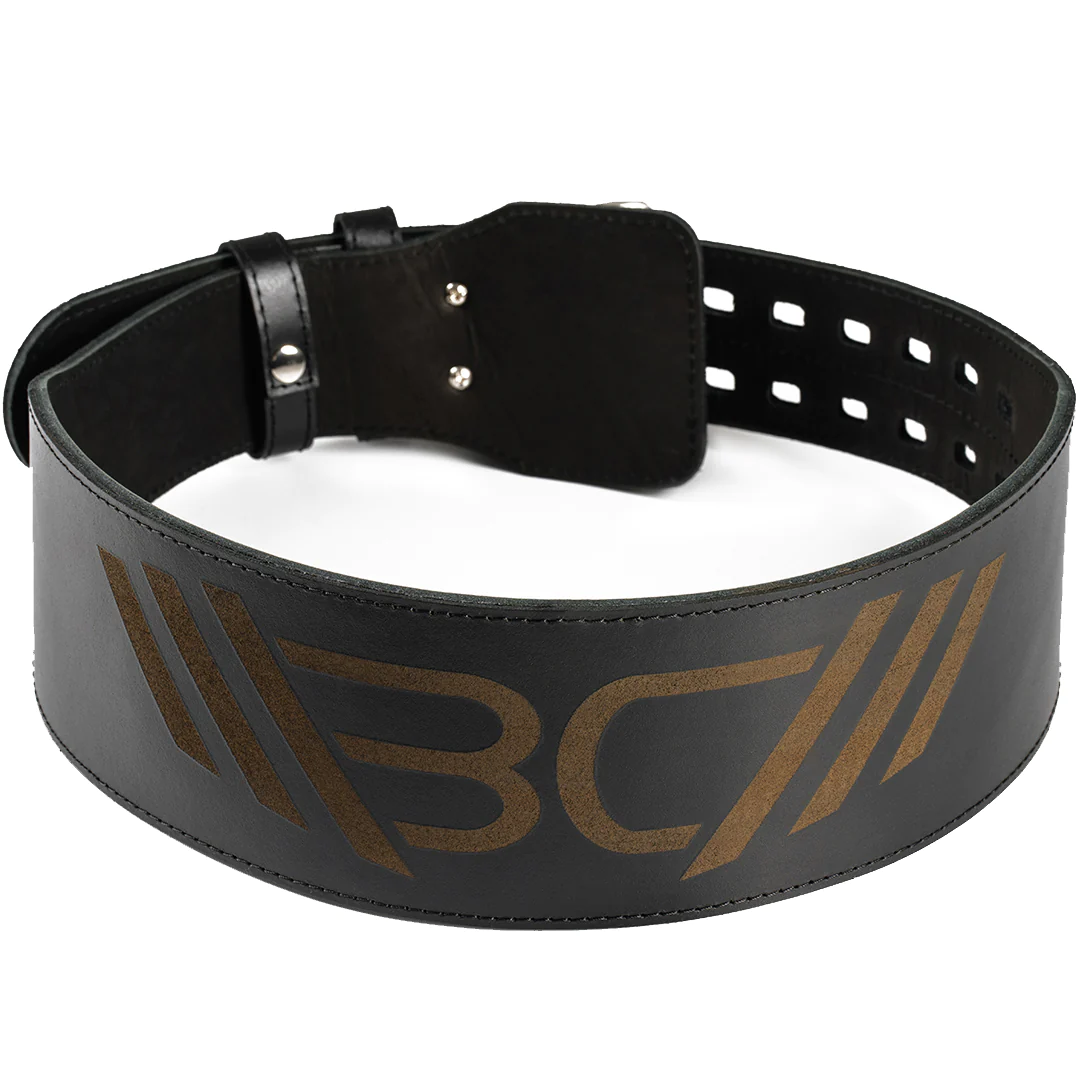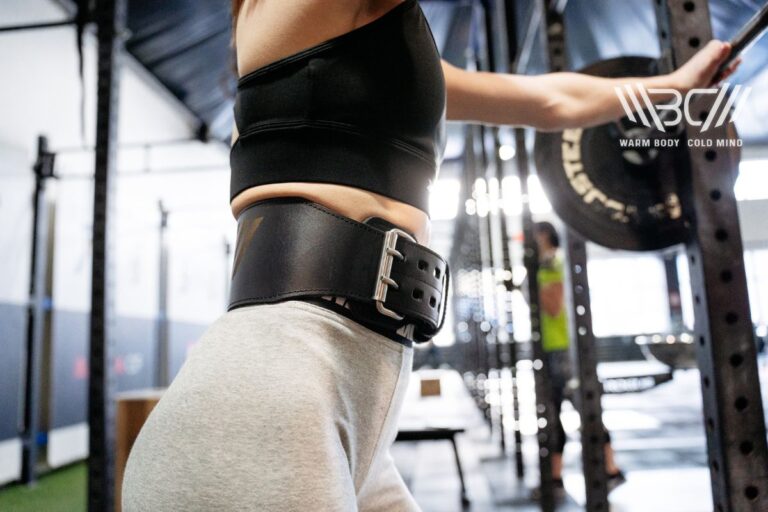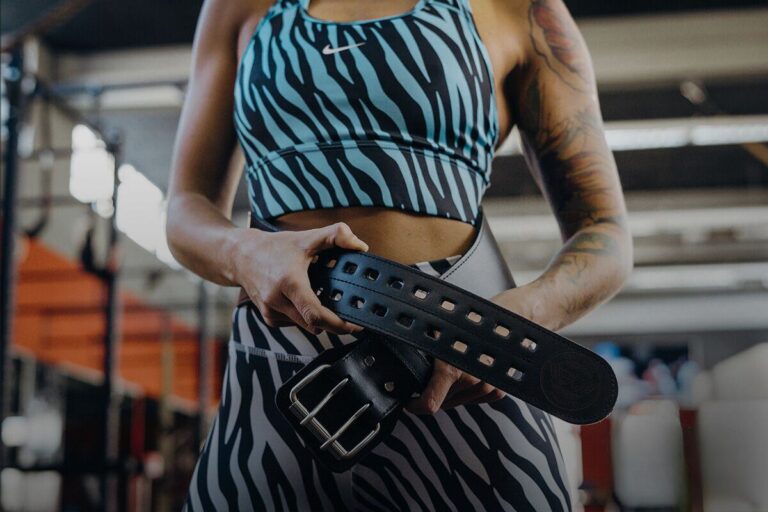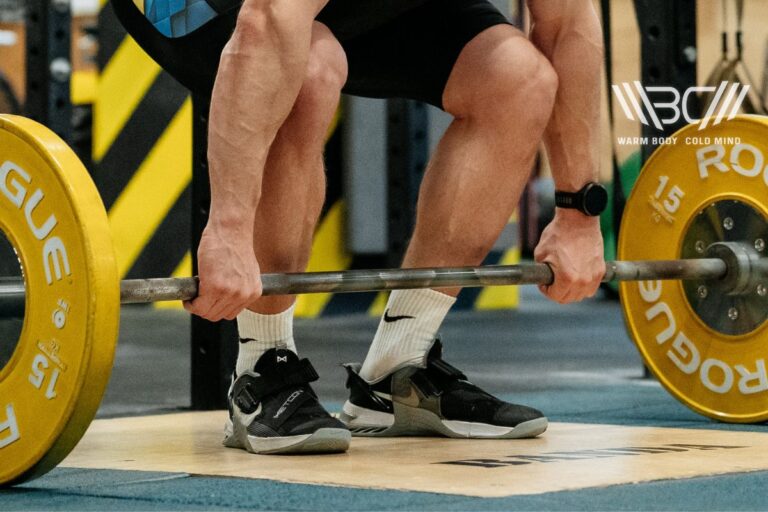Should You Wear a Belt For Bench Press? (PhD Explains)
While it’s universally accepted as beneficial for exercises like deadlifts and squats, an ongoing debate persists: does a belt help with bench presses?
Why using a belt for bench press? – Benching with a belt won’t magically make you stronger. However, wearing a belt while benching can support your bench press arch, stabilize your core, and remind you to breathe properly, leading to better exercise technique, muscle recruitment, and greater results.
This article covers the dos and don’ts of using a belt for bench press workouts. We’ll draw on both science-backed evidence and personal experience to explain who should use it, when it’s most effective, and how to do so correctly.
What Does a Lifting Belt Do for Bench Press?
Fact: Wearing a weightlifting belt for bench press does not have the same effects as using it for deadlifts or squats. The main benefit of using a belt when doing the latter two exercises or similar upright position lifts is creating intra-abdominal pressure (IAP), which stabilizes the spine and helps it carry the heavy load. However, between the three exercises, the bench press has the lowest recorded IAP — 79±44 mmHg vs. over 200 mmHg for squats or deadlifts. This is because, during bench presses, our body is horizontal, so the weight doesn’t push the spine vertically into the ground.
Then you may ask: Should I wear a belt when benching? Yes, there are still benefits to wearing a weight lifting belt for bench press attempts. Here are some examples of why it works:
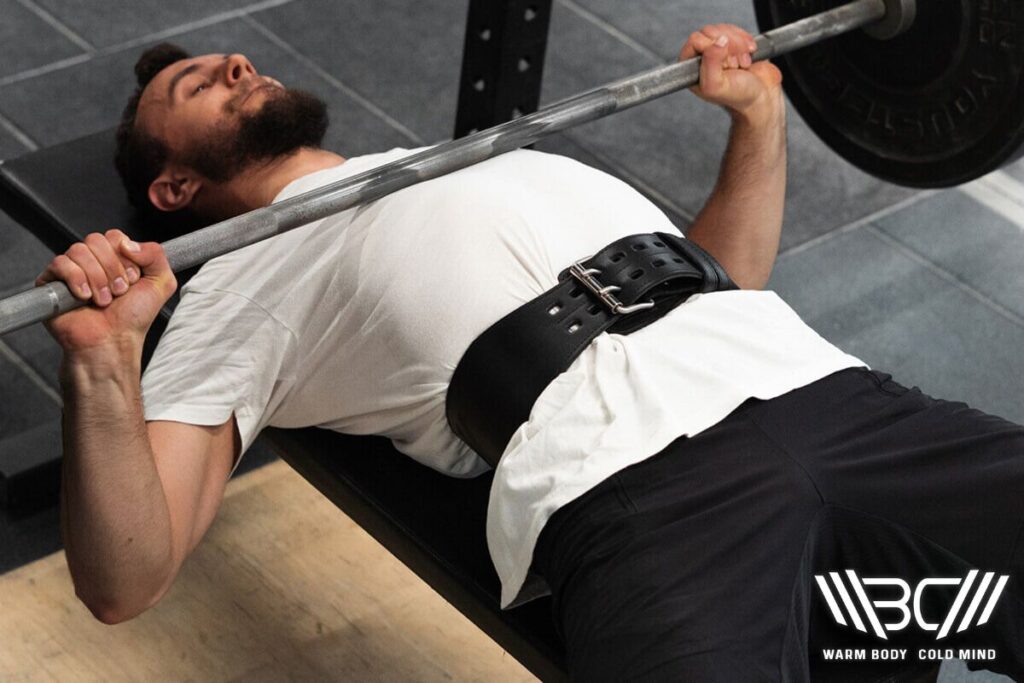
1. Keeps Your Core in Place
Engaging our core is an important factor in many lifting exercises, including the bench press. But, maintaining core stability during the exercise can be tough, especially with heavier weights.
When we use a belt, it functions like a barrier, limiting excessive movement of the core muscles and helping to maintain stability. Think of the belt as a sort of net for your muscles — the tighter it is, the more secure the contents are, and the less they move around, making the whole structure more stable as a result.

Enhance your strength training with Warm Body Cold Mind leather weightlifting belt providing exceptional support and durability.
2. Supports the Back Arch
Beginner lifters may be led to believe that laying down fully flat on the bench is the most effective way to bench press. Logically, if our full body is in contact with the bench, we should be able to push up with more muscles.
However, that’s not always the case. For the vast majority of people, when attempting to bench press, our back will naturally start arching upward. This effect is especially noticeable when we struggle to lift higher weights and are approaching exercise failure on longer sets.
Experienced athletes have long since taken notice of this and now consciously choose to arch their backs when benching. When our back is arched, our hips sink into the bench, our legs push harder against the ground, and our shoulder blades come closer together.
Overall, this recruits more muscles in our glutes, quads, and shoulders, resulting in immediate greater force generation. This is also why this technique is especially popular among advanced lifters who prioritize heavy loads and low repetitions — for example, powerlifters.
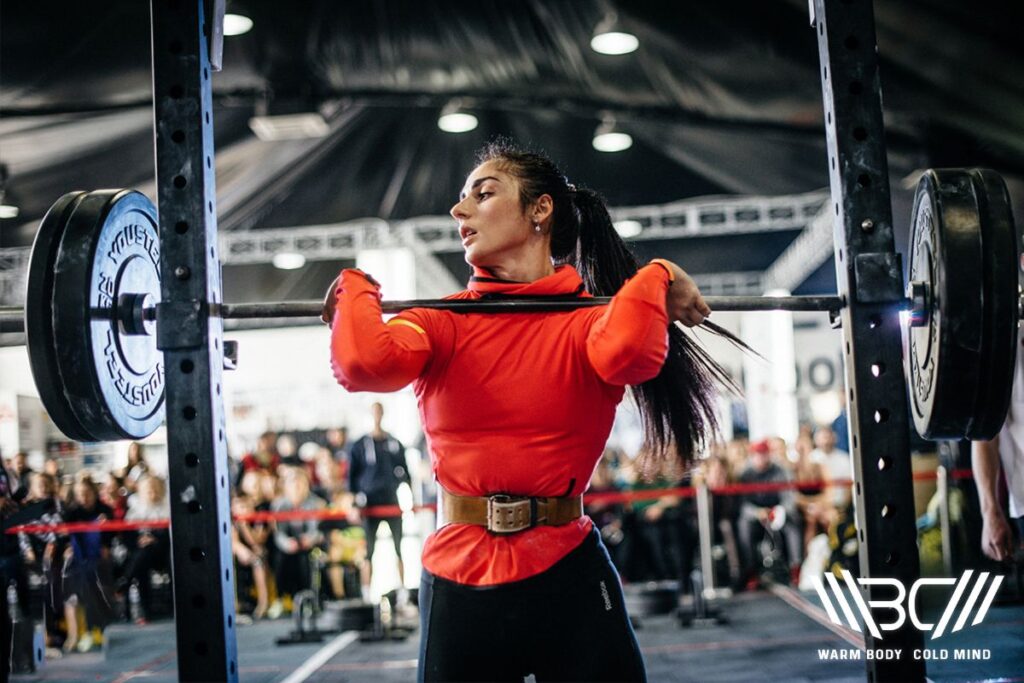
So, should you arch your back during bench presses? Surprisingly, studies have shown that bench pressing with vs. without an arch had minimal result differences in both trained and untrained athletes. In other words, it comes down to personal preference. With that in mind, if you’re among the crowd that likes to or simply naturally arches their back, then a belt might come in handy.
When we arch our back our muscles will expand outwards which can make the core unstable. A weightlifting belt acts as a wall for the muscles to push back against, retaining stability and reminding us to keep them tight.
3. External Reminder
Wearing a belt while benching can serve as a reminder to utilize proper benching techniques. This can be especially helpful for beginners to avoid unintentionally developing bad habits, especially if training without a qualified coach. A big part of the lift itself is the brace beforehand and proper breathing throughout the exercise. It’s important to keep your core engaged throughout the bench press to avoid instability.
Before you lift the barbell off the rack, take a deep breath into your chest and feel it expand outwards — this is usually coupled with the back arch. Hold your breath in as you lower the barbell down to your chest, then breathe out as you push it back up. Inhale again, lower it back down and repeat the process.
4. Confidence Boost
Mental edge can be a factor between hitting and not hitting new personal records. It’s not a secret that a lot of people wear it because it looks and feels cool, which boosts their confidence. If you feel comfortable wearing a belt while benching, by all means, go for it.
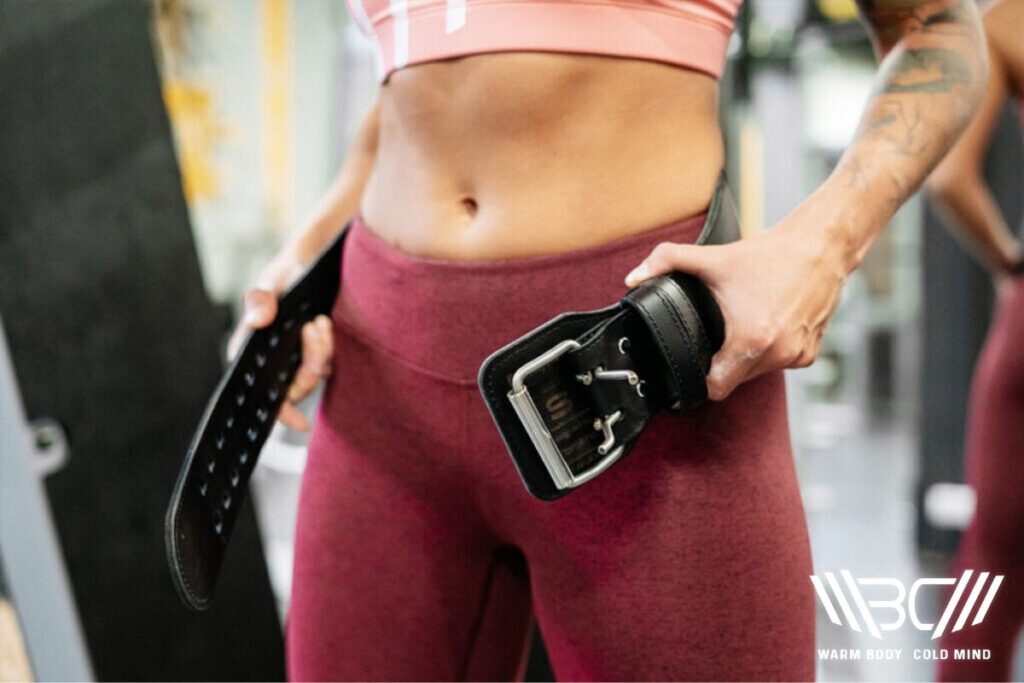
How to Wear a Lifting Belt for Benching?
Knowing how to wear a lifting belt is just as important as wearing one. Here are some important reminders:
1. Know Where to Place It
Despite its name, a weightlifting belt is not meant to be worn around your waist. The correct position for a weightlifting belt is surrounding your core. When fastened, the belt should sit above your hip bones but below your rib cage.
2. Adjust the Fit
A common beginner mistake with wearing weightlifting belts is fastening them too tight. When fastened, the belt should be tight enough to catch your core expansions — thus creating intra-abdominal pressure — without feeling restrictive and digging into your body. To adjust the fit, before putting the belt on, simply breathe into your diaphragm and let it expand outward. Now hold your breath and fasten the belt. It can also help to lie down on the bench first before tightening the belt to get a feel for how much your body will expand in a horizontal position.
Subscribe!
The latest reviews of must-have home gym training equipment, apparel, and supplements that will enhance your performance and bring you new results.
Why You May Not Want to Wear a Belt for Bench Press?
We briefly touched upon how bench presses do not require a belt the same as a deadlift or squat would due to the absence of intra-abdominal pressure. Apart from that, here are some other reasons you may find benching with a belt unnecessary:
1. It Can Restrict Breathing
This may not be a big issue if you’re going for 1-3 repetitions with your maximum for example when attempting to break a personal record or during a powerlifting competition. However, on higher repetition sets when you want to train your upper body, the belt may feel restrictive around your diaphragm.
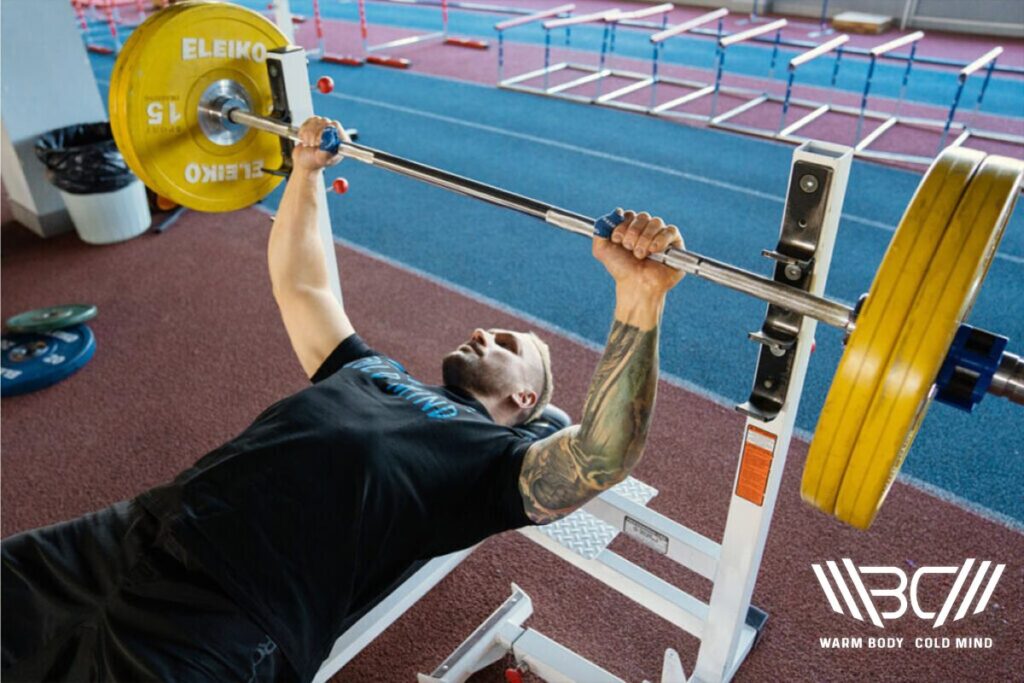
This can especially be true if you arch your back when benching, which already puts pressure on your abdominals and obliques. If that’s the case for you, you may need to wear it looser than you normally do, however, having it too loose would then defeat the purpose of wearing one.
2. It May Feel Uncomfortable
Not everybody has the same anatomy. Depending on factors like the size of your body, the shape of your hips, the length of your torso, etc. you may find the belt doesn’t fit well when you lay down with it. For example, heavyweight athletes with a higher Body Mass Index (BMI) may find they’re unable to tighten it enough for it to be effective without feeling overly restrictive once they brace to the bench. If you lift with your back arched, it may dig into your upper back, especially if the belt is new and not yet broken into thus feeling stiff around the edges. If it feels uncomfortable, you can try going for a narrower belt or skip wearing one altogether.
3. Personal Choice
At the end of the day, it all comes down to how you feel about it. Unless you’re a heavy competitive lifter who needs to squeeze out the most from the exercise, wearing a belt while benching when not attempting your maximum might feel like overkill.
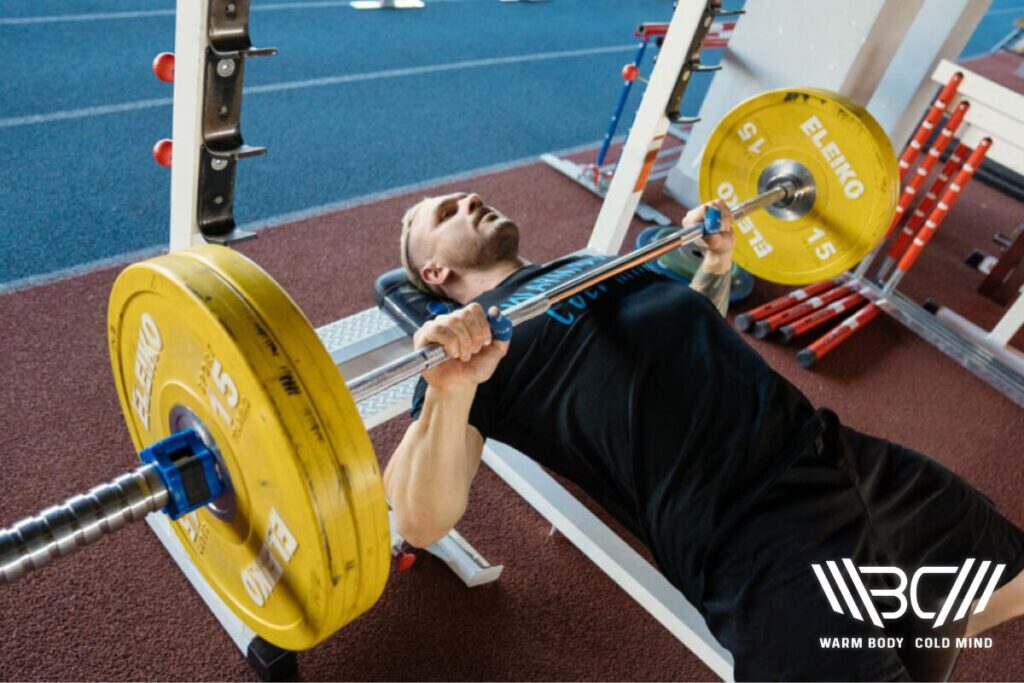
What Kind of Lifting Belt Do You Need for Bench Press?
When it comes to bench pressing, having the right belt matters. If you’re lifting heavy, you need a belt that can handle the pressure. That’s why many powerlifters go for leather belts. They’re tough and can take a lot. Since your belly pushes against the belt, especially if you arch your back, it needs a strong fastener. Look for one with a steel double prong belt buckle or a lever. This way, it won’t come loose or break. The typical belt standard is 4 inches wide, however, make sure the belt isn’t too thick. You want it to support you, but not restrict your movements.
Our Recommended Belt – Warm Body Cold Mind Leather Weightlifting Belt
If you’re looking for a great belt for benching and other weightlifting needs, the Warm Body Cold Mind leather belt has your back — literally. Fully designed from first-hand competitive experience by former Olympic athlete, Oleksiy Torokhtiy, the belt is built for champions. It’s made from A-grade genuine leather, which not only gives it a premium look and feel but also remarkable durability.
At 4 inches wide and 6 mm thick, and further reinforced with four strengthening bolts, it provides optimal support while adhering to weightlifting competition standards. The belt buckle is made from stainless steel, immune to corrosion and oxidation.
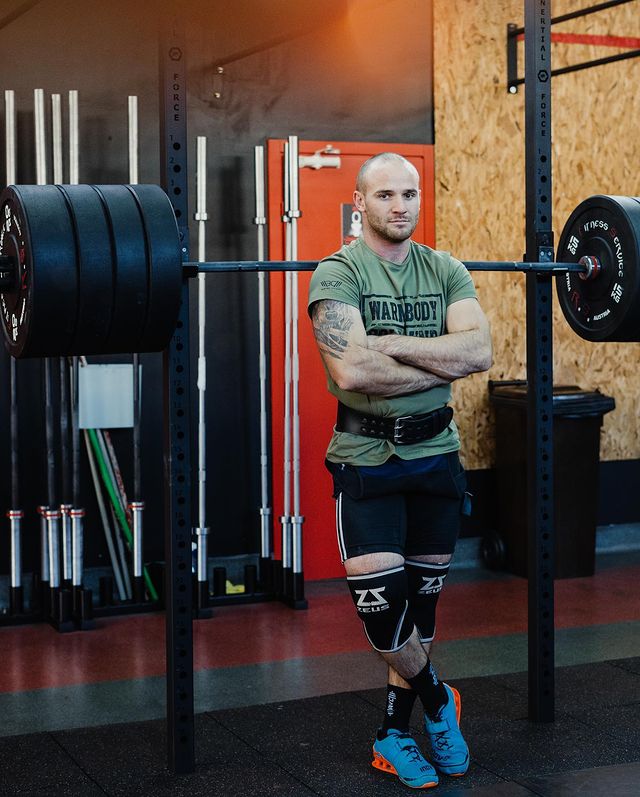
Thanks to the double-prong fastening system, it won’t come loose or break under exercise pressure. The belt is unisex and available in a variety of sizes – from S to 3XL – fitting virtually all body types. Crafted with exceptional quality, it still maintains a competitive price.
FAQ
How Much More Can You Bench Press With a Belt?
Benching with a belt won’t allow you to lift more weight upfront, however, it can help with other aspects of the lift, such as stability, posture, and confidence. This can lead to greater exercise results, including an immediate slight increase in maximum weight capacity.
Should I Use a Belt for Reps When Benching?
Weightlifting belts are best used when going for low-repetition (1-3) reps, maximum capacity (80% of your max or more) lifts. When doing higher repetitions on lower weight capacity, a belt may be unnecessary, but you can still wear it if you find it helps you.
Conclusion
As you’ve seen, using a belt for bench press variations is not as straightforward as with deadlifts, squats, or similar upright-standing (vertical) lifts. So far, the science behind it is fairly inconclusive, with arguments for and against it.
For many people, wearing a belt while benching will come down to personal preference. If you arch your back while you bench press, having one on may provide additional support, especially on higher-capacity lifts.
Do you normally use a weightlifting belt when you lift? Have you tried benching with it and, if so, did you feel it was effective? Share your experience with us in the comments and remember to follow us on social media where we post lots of valuable fitness content.
References:
- “Effects of a belt on intra-abdominal pressure during weight lifting”, Harman EA, Rosenstein RM, Frykman PN, Nigro GA., Medicine & Science in Sports & Exercise. 1989 Apr;21(2):186-90 https://pubmed.ncbi. nlm.nih.gov/2709981/ (accessed Sep. 27, 2023)
- “Systematic review of intra-abdominal and intrathoracic pressures initiated by the Valsalva manoeuvre during high-intensity resistance exercises”, Blazek D, Stastny P, Maszczyk A, Krawczyk M, Matykiewicz P, Petr M., Biology of Sport 2019 Dec;36(4):373-386. https://www.ncbi.nlm.nih.gov/pmc /articles/PMC6945051/ (accessed Sep. 27, 2023)
- “The Bench Press: A Comparison Between Flat-Back and Arched-Back Techniques”, Phil Tungate MSc, CSCS, Strength and Conditioning Journal 41(5):p 86-89, October 2019. https://journals.lww.com/nsca-scj/abstract/2019/10000/the_ bench_press__a_comparison_ between_flat_back.11.aspx (accessed Sep. 27, 2023)
- “Performance Differences Between the Arched and Flat Bench Press in Beginner and Experienced Paralympic Powerlifters”, Ribeiro Neto F, Dorneles JR, Luna RM, Spina MA, Gonçalves CW, Gomes Costa RR., The Journal of Strength and Conditioning Research 2022 Jul 1;36(7):1936-1943.https://pubmed.ncbi.nlm.nih.gov/32740285/ (accessed Sep. 27, 2023)
- “What is the body mass index (BMI)?”, nhs.uk https://www.nhs.uk/common-health-questions/lifestyle/what-is-the-body-mass-index-bmi/ (accessed Sep. 27, 2023)
Author: Sergii Putsov
PhD in Sport Science, Olympic weightlifting, Strength & Conditioning coach and fitness expert
Sergii Putsov is a professional weightlifter with over 20 years of experience and multiple national medals. He was a member of the National weightlifting team, competing in the 94 kg weight class. Sergii holds a master’s degree in Olympic & Professional Sport Training and a Ph.D. in Sport Science. After his athletic career, Sergii transitioned into coaching and is now responsible for designing training programs, writing blog articles, providing live commentary for international weightlifting competitions, and hosting sport and fitness seminars worldwide.


